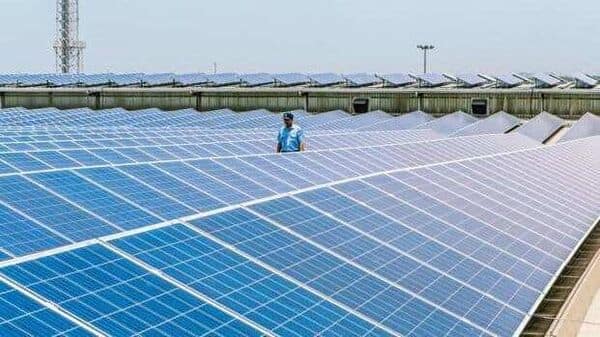 Opinion
Opinion
India’s energy transition: Looking beyond the budget

Summary
The budget affirmed our commitment to a net-zero future but we must work out the finer detailsTwo-and-a-half months after Prime Minister Narendra Modi announced India’s target of achieving net-zero emissions by 2070, Finance Minister Nirmala Sitharaman highlighted climate action and an energy transition as pillars of economic development in her budget speech. The message is clear: climate sustainability is integral to India’s economic policy. The energy transition will also have far-reaching implications for energy security, and the ripple effects of unfolding events in Ukraine are a sobering reminder of its relevance. So, what do we need to do for the transition to happen?
There are three parallel transitions, or shifts, taking shape on our journey towards a low-carbon future. First, a shift from fossil fuel-based power generation to renewable energy-based (RE) generation. Second, a transition from petrol and diesel-powered vehicles to electric vehicles (EVs). Finally, a shift from fossil-fuel-powered industrial manufacturing to that powered by green hydrogen. Each shift is at a different phase, and a holistic transition requires them to intersect. This involves five considerations.
First, the investment challenge is real. The 21st report of the Standing Committee on Energy (2021-22) on financial constraints in the renewable energy sector highlights that India’s long-term RE commitments require ₹1.5-2 trillion annually. Actual investments in the last few years have been around ₹75,000 crore. A study by the CEEW Centre for Energy Finance estimated that our power, mobility and industrial sectors would require investments of $10.1 trillion for India to achieve net-zero by 2070. It highlighted that conventional sources would only be able to muster $6.6 trillion. Developments such as the record $5.1 billion fund-raising by Indian RE developers in international bond markets in 2021 are promising. So is capital infusion into the Indian Renewable Energy Development Agency (IREDA), which will reportedly allow it to lend an additional ₹12,000 crore. Still, these could be considered just the first laps of a marathon.
Second, we need differentiated interventions. So far, growth in the RE sector has resulted from policy pushes, including power purchase agreements (PPAs), solar parks and reverse auctions for tariff discovery. Incentives for domestic manufacturing, new power sources such as offshore wind, new tariff and tender designs, and grid integration would drive growth further. Electric mobility is different. Its ₹14.4 trillion revenue opportunity is primarily driven by individuals. Building consumer confidence in EVs is key and the recent budget proposals on battery swapping and interoperability do just that. For green hydrogen, blending and exports offer the possibility of PPA-type contracts with highly rated off-takers, opening up financing options. However, unfamiliarity with the technology means interventions may also be required at the lender level, something EVs could benefit from as well.
Third, treat the investment challenge as an opportunity. There was a budget announcement related to sovereign green bonds. We can expect these bonds to be serviced by rupee revenues, with rupee-denominated end-use. This makes a strong case for domestic as well as ‘masala’ bond issuances overseas. The budget speech also emphasized further development of Gift City, home to the India International Exchange (India INX). Several Indian corporates have tapped India INX to raise capital from international investors. India’s immense requirements for green finance could be turned into an advantage to develop a homegrown but world-facing capital market. This could establish India as a gateway for emerging economies in Asia and Africa looking to raise international capital for their own transitions.
Fourth, design a playing field that’s more transparent and level. As investors pour capital into green, climate, and sustainability-related themes, they would demand accountability. Companies would also expect to be fairly rewarded for achievements.
In 2021, the Securities and Exchange Board of India (Sebi) directed India’s 1,000 largest companies to mandatorily publish business responsibility and sustainability reports with effect from 2022-23. More recently, Sebi released a consultation paper on a framework to regulate environmental, social, governance (ESG) rating providers. What’s left? A classification system, or taxonomy, that allows all stakeholders to uniformly determine the green, climate or sustainability-related attributes of businesses.
Fifth, a broader market for carbon credits is essential. As India transitions, there will be over-achievers and those that miss emissions targets. A system of rewards and nudges is an important policy lever. To an extent, Renewable Energy Certificates (RECs), which allow buyers to purchase the zero-carbon attributes of RE, fulfil that role. But they face challenges. Renewable Purchase Obligations (RPOs) extend primarily to discoms; firms and industries are generally exempt. Their volumes have been notable, with ₹9,266 crore worth of RECs sold on exchanges until trading was suspended in July 2020 (resumed November 2021). However, RECs would also face a supply shortfall if discom RPOs were strictly enforced. Therefore, a broader market for carbon credits is critical for India to tie various transitions together.
There appears to be no turning back on the path of decarbonized economic growth for India. The recent Union budget has made this sufficiently clear. The scale of the challenge is also balanced by an opportunity. It’s the execution that will now determine the pace at which we proceed along that path.
Gagan Sidhu is director of the Centre for Energy Finance at the Council on Energy, Environment and Water


